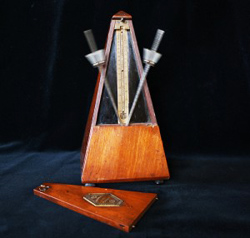
2. Copy, Paste, Loop
Do you (or the artist) intend to use all sorts of loops in the song?
Do you want to be able to copy and paste a performance from one section of the song to another?
For example, sometimes I’ll take a guitar part from the second chorus and move it over to the first chorus.
Without the click track, there’s no way the different sections of the song would be at the same tempo.
Using a click track essentially lets you record everything to a grid.
Once it’s recorded, it can be moved around without worrying about tempo changes.
This can open the door to all sorts of creative options.
3. Multiple Takes
When you have that very first tracking session for a song — whether it’s drums, guitars, piano, whatever — you typically want to record multiple takes of each part, right?
That’s what I do. I’ll record 3-5 full takes of the acoustic guitar, then I’ll go in and comp together the best parts of each take into one master comp track.
Now imagine that you didn’t record to a click track.
Suddenly multiple takes are out of the question. You can’t use the chorus from take 2 and the verse from take 3, because they will inevitably be at slightly different tempos.
If you’re multi-track recording a full band, it’s even more imperative to use a click track.
You could have the band record 5 full takes of the song, then you have the luxury of using the bass player’s 3rd take, the drummers 5th take, and the guitarist’s 2nd take in your final mix — all because they were all recorded at exactly the same tempo.
There are certainly no rules in recording, but I almost always use a click track, because of the flexibility it offers after-the-fact.
Joe Gilder is a Nashville based engineer, musician, and producer who also provides training and advice at the Home Studio Corner.
